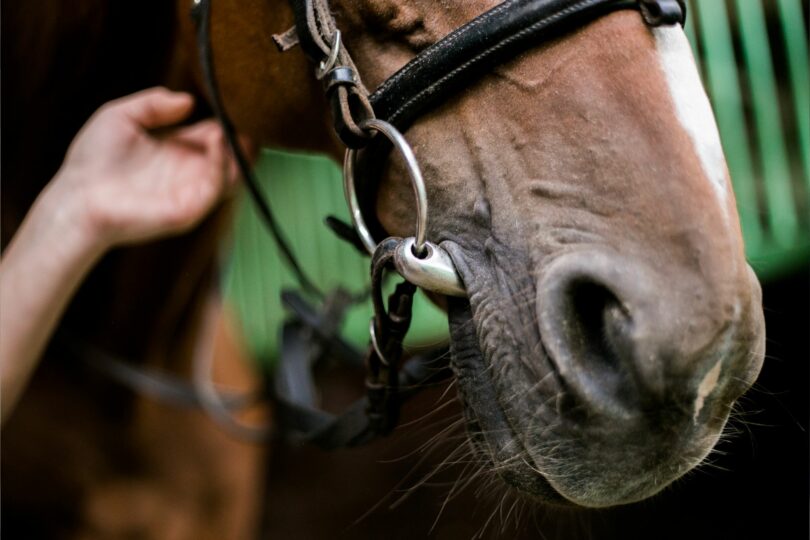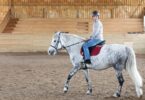An Helpful Guide to Horse Bits
The bit wall of a tack store can be intimidating to anyone, even advanced riders. Beginners are likely to feel downright overwhelmed. Some bits are best for beginners, while other bits are preferred by specific disciplines (like how
If you’re going to be competing, get a copy of your discipline’s rulebook to see which bits are permitted versus prohibited at shows. Once you know what is legal, measure your horse’s mouth to ensure you get the correct size. Decide what type of bit you need, then narrow it down to the type of metal and mouthpiece. When in doubt, get the help of a trainer.
Parts of a Horse Bit
Like with any piece of tack, bits have different parts. There are two main types of bits: snaffle and curb.
Let’s break down the anatomy of each.
Anatomy of a Snaffle Bit
All snaffle bits have two main parts. There’s the mouthpiece, or what sits in your horse’s mouth, and the rein rings, which attach the reins directly to the bit.
 Anatomy of a Curb Bit
Anatomy of a Curb Bit
Curb bits are a bit more complex. They also have a mouthpiece, but two parts are attached to it. Above the mouthpiece is the purchase. This is what connects the bit to the bridle. The purchase may also have loops for a curb strap.
Below the mouthpiece is the shank, which holds the rein ring. Together, the purchase and shank are known as the cheek.
 Types of Mouthpieces
Types of Mouthpieces
- Mouthpieces on both snaffle and curb bits come in a variety of options.
- Single-jointed (creates a “V” shape when pulled)
- Double-jointed (creates a “U” shape)
- Mullen (provides a soft outward curve)
- Triple Mullen (provides flexibility)
- Ported (low, medium, and high; offers different pressure points and degrees of tongue relief)
Common English Style Bits
English-style riding employs both snaffle and curb bits, depending on your specific discipline and level of riding. In
Another popular choice is the Eggbutt snaffle, named for the shape of the connection between the mouthpiece and the rein ring.
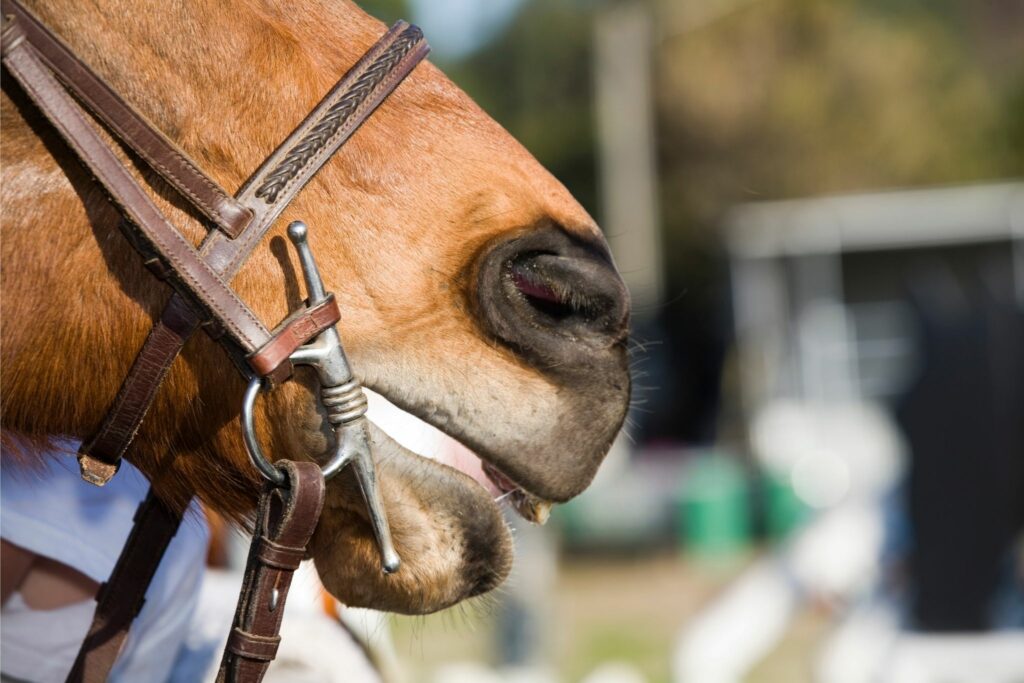
Full-cheek snaffle bit. Photo cred: Canva
Snaffle vs Kimberwick
It’s easy for beginners to confuse a Kimberwick for a snaffle bit because of their similar shape and design. A Kimberwick is technically a curb bit, however, though a milder one.
A Kimberwick combines the function of a snaffle with the added leverage of a curb bit.
It can be an excellent choice for riding a strong horse outdoors and is a great way to transition from a snaffle bit to a curb bit.
 What is a full bridle?
What is a full bridle?
A full bridle, also known as a double bridle, consists of both a snaffle and curb bit used in conjunction. The snaffle should sit above the curb bit, and the snaffle rein is often held more tightly than the curb rein.
You’ll often see these bridles on upper-level
dressage horses.
If you and your horse are transitioning to a double bridle, it may be a good idea to start with a Kimberwick. It combines the action of a snaffle and curb and has two slots for reins. You can attach two sets of reins and get used to the feel in a bit that’s less likely to accidentally jerk your horse’s mouth.
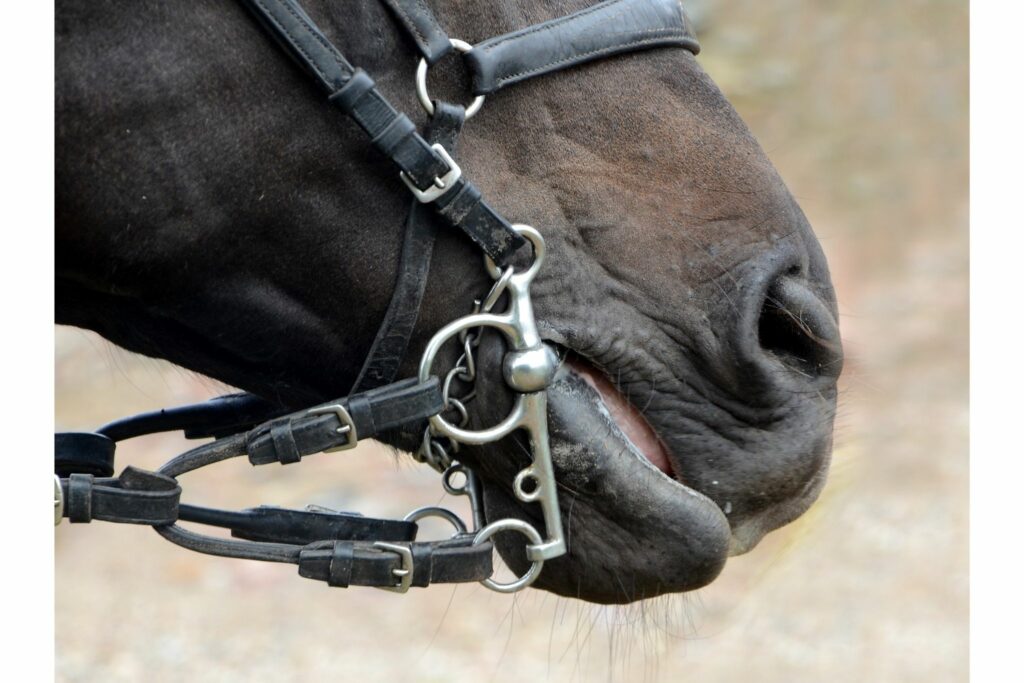
Weymouth bit, commonly used for
Common Western Style Bits
Western-style bits are often distinguished by their long cheeks. Many riders also think of bits that have a curved mouthpiece, such as a ported bit.
Curb Bit vs Correction Bit
Curb bits provide more leverage and control than a snaffle. A Western curb bit commonly has a port, a curb chain, and cheeks of varying lengths. The part of the bit from the mouthpiece down to the rein attachment is called the shank. This creates leverage, multiplying the amount of pressure the horse feels on its mouth.
The longer the shank, the more advanced the bit.
A correction bit is designed to reinforce the rein aids of a well-trained horse or help to fine-tune them. They’re meant to be used just for training and not for everyday use. They typically have high ports and long shanks.
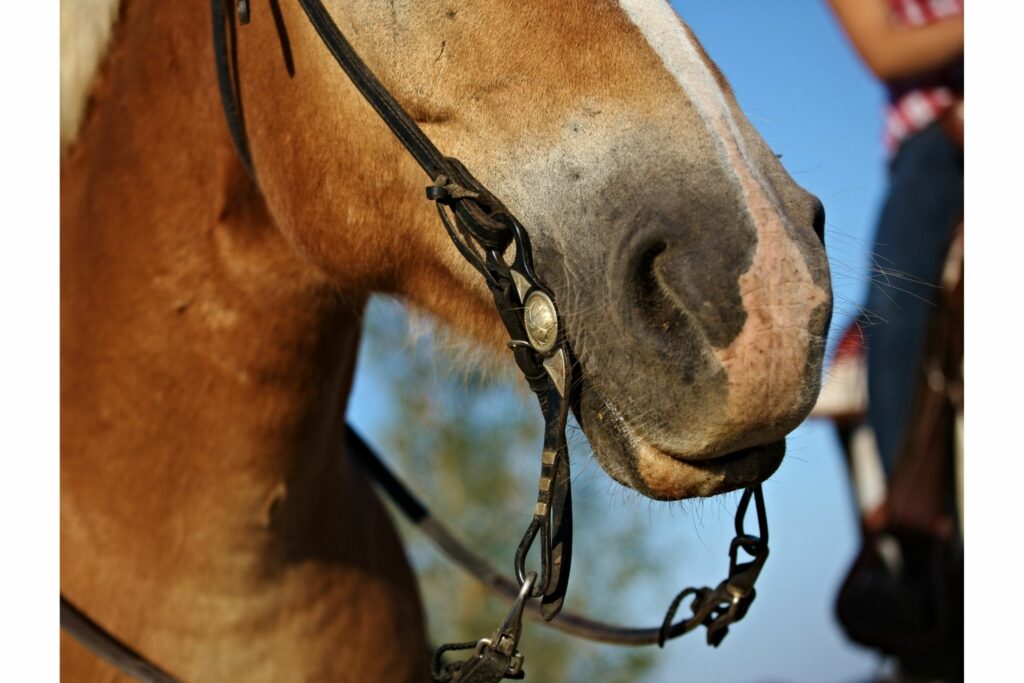
Western style curb bit. Photo cred: Canva
What is a hackamore?
A hackamore is a type of bitless bridle that often has a nosepiece and shanks, which provide more leverage. This type of bridle works through the application and release of pressure.
If used incorrectly, hackamores can be just as harsh as bits.
Frequently Asked Questions
Q: What is the gentlest horse bit?
The gentlest bit is no bit, aka a bitless bridle. If that’s not an option, an Eggbutt snaffle or rubber training bit is considered the kindest bit. It’s important to note that any bit can be harsh if used incorrectly.
Q: What is the harshest horse bit?
A bit with a double twisted wire snaffle mouthpiece is often considered to be very harsh.
Q: What is the difference in bits for horses?
Not all horses do well with the same type of bit. They may have different tongue sensitivities or even slight differences in the shape and curve of their mouth and roof. Some horses respond best to a single joint; others prefer a double joint or Waterford bit.
Bits also come in different types of metals.
Copper can encourage a horse to salivate, sweet iron is meant to rust (which creates a sweet taste), and stainless steel has a neutral effect. You may need to experiment to see which metal and shape your horse prefers.
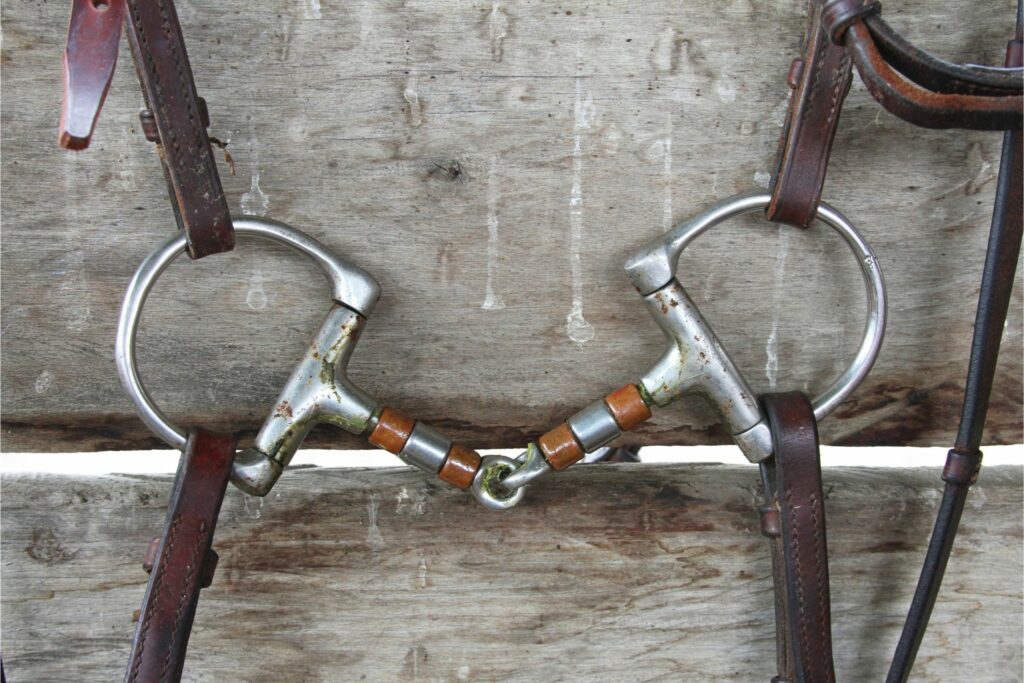
D ring snaffle bit with copper rollers. Photo cred: Canva
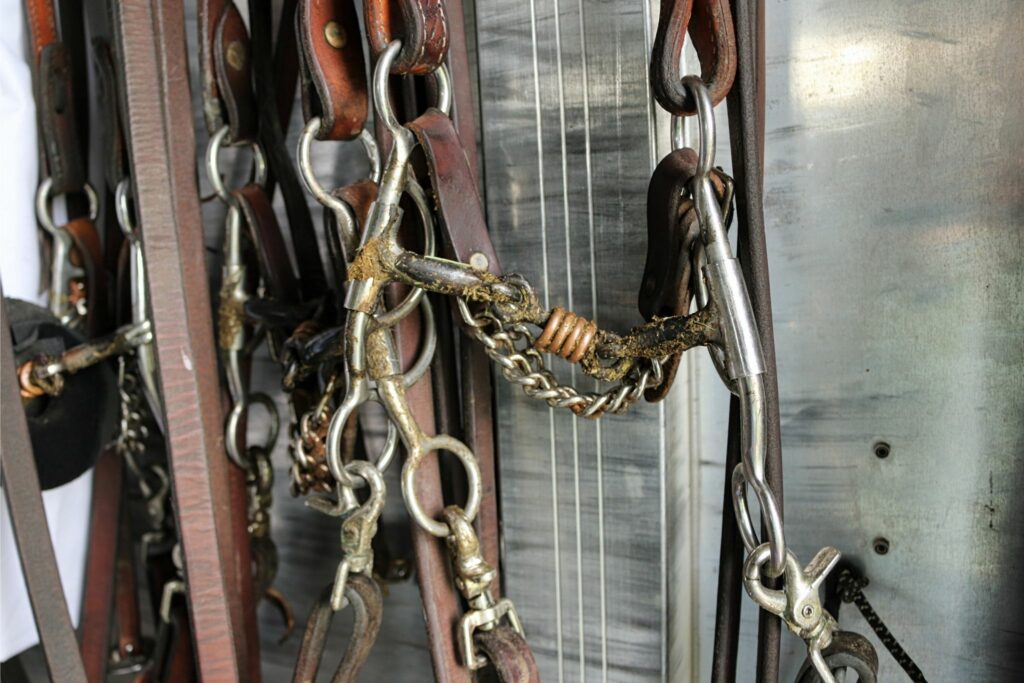
Curb bit with jointed mouthpiece and copper roller – in need of a good cleaning! Photo cred: Canva
Parting Thoughts
If you’re not sure which bit is right for you and your horse, get the help of a trainer. An equine professional can help point you in the right direction! Ask other boarders if you can try their bits on your horse for both size and feel (many tack stores don’t allow bits to be returned).
No matter which bit you choose, getting the right size is imperative. Too small or too big will cause discomfort, pain, and even bad behavior. Always choose the least severe bit possible.
P.S. Enjoy this article? Trot on over to:
- 5 Best Horse Bits for Control Without Cruelty
- Real Talk: How Much Does a Jumping Horse Cost?
- 16 Common Types of Horse Bits (A Helpful Illustrated Guide)
- Best Bits for Quarter Horses (A Helpful Illustrated Guide)
- (Bit)Less is More: Bitless Horseback Riding for Beginners
- 5 Best Bits for Your Arabian Horses (English & Western)
- 6 Best Horse Bits for Beginners

